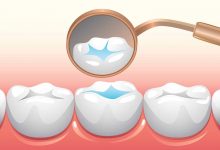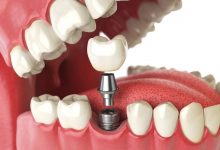Navigating Dental Distress: A Guide to Fixing a Broken Tooth

Index Of The Blog
Are you currently experiencing a dental emergency? Perhaps you were playing sports and took a hard hit to the mouth, or maybe you bit down on something hard and felt your tooth crack. A broken tooth can be scary and painful, but fear not – there are steps you can take to fix it.
In this guide, we will discuss the different types of broken teeth, how to manage the pain, and what to do next. But first, let’s understand why a tooth breaks in the first place.
Why Do Teeth Break?
There are several reasons why a tooth can break or chip. One of the most common causes is trauma – this could be from accidents, falls, sports injuries, or biting down on a hard object. Other factors that can weaken the tooth and make it more prone to breaking include tooth decay, large fillings, teeth grinding, and poor dental health.
It’s important to note that older adults are more susceptible to broken teeth due to wear and tear over time. Additionally, individuals who have undergone certain dental procedures such as root canals or crowns may also be at a higher risk for broken teeth.
Types of Broken Teeth
Not all broken teeth are the same. The type of break will determine the severity, treatment options, and potential risks involved. Here are the different types of broken teeth:
- Craze lines: These are small, shallow cracks on the surface of the tooth that do not usually cause pain or require treatment.
- Chip: This is when a small piece of the tooth breaks off. The severity and treatment depend on the size and location of the chip.
- Cracked tooth: A crack that extends from the chewing surface towards the root of the tooth. This type of break can cause severe pain and may require immediate treatment to prevent further damage.
- Broken cusps: When a small part of the chewing surface of the tooth breaks off, it is known as a broken cusp. This type of break may not cause pain but can impact the appearance and function of the tooth.
- Split tooth: A crack that extends from the chewing surface to below the gum line. This type of break often requires extraction or a root canal.
- Vertical break: A vertical break is when the tooth splits in half vertically, which can be a serious dental emergency. Immediate treatment may be necessary to save the tooth.
Managing Pain and Discomfort
A broken tooth can cause varying degrees of pain and discomfort depending on the severity and type of break. If you experience severe pain or bleeding, seek immediate dental care.
If the pain is manageable, here are some tips to help you reduce discomfort at home:
- Rinse your mouth: Rinse your mouth with warm saltwater to clean the affected area and help relieve pain.
- Over-the-counter medication: Over-the-counter pain relievers such as ibuprofen or acetaminophen can help manage the pain.
- Cold compress: Apply a cold compress on the cheek over the broken tooth to reduce swelling and numb the area.
What to Do Next
If you have a broken tooth, it’s essential to seek dental care as soon as possible. The treatment will depend on the type and severity of the break, but here are common options:
- Dental bonding: For minor chips, your dentist may use a tooth-colored resin material to fill in the chip and restore the appearance of your tooth.
- Crown: A crown is a cap that is placed over a damaged tooth to restore its shape, strength, and function.
- Root canal: If the break has exposed the pulp or nerve of the tooth, you may need a root canal to remove the damaged tissue and restore the tooth.
- Extraction: In severe cases where the tooth cannot be saved, extraction may be necessary. Your dentist will discuss options for replacing the missing tooth, such as dental implants or bridges.
Always consult a dentist that specializes in teeth replacement in Chaska, MN for the best treatment options for your broken tooth.
Preventing Future Broken Teeth
While accidents happen, there are steps you can take to prevent future broken teeth. Here are some tips:
- Wear a mouthguard: If you participate in contact sports or grind your teeth at night, wearing a mouthguard can protect your teeth from trauma.
- Maintain good oral hygiene: Brush twice a day, floss daily, and visit your dentist regularly for cleanings and check-ups to keep your teeth healthy and strong.
- Avoid hard foods: Be cautious when biting down on hard objects such as ice or popcorn kernels that can cause your tooth to chip or break.
Conclusion
A broken tooth can be a painful and scary experience, but with the right treatment and care, it can be fixed. Remember to seek dental care as soon as possible, manage any pain or discomfort at home, and take preventive measures to avoid future breaks. Taking good care of your teeth is crucial in keeping them healthy and strong for years to come. So keep brushing, flossing, and wearing a mouthguard when necessary to prevent any dental distress.













